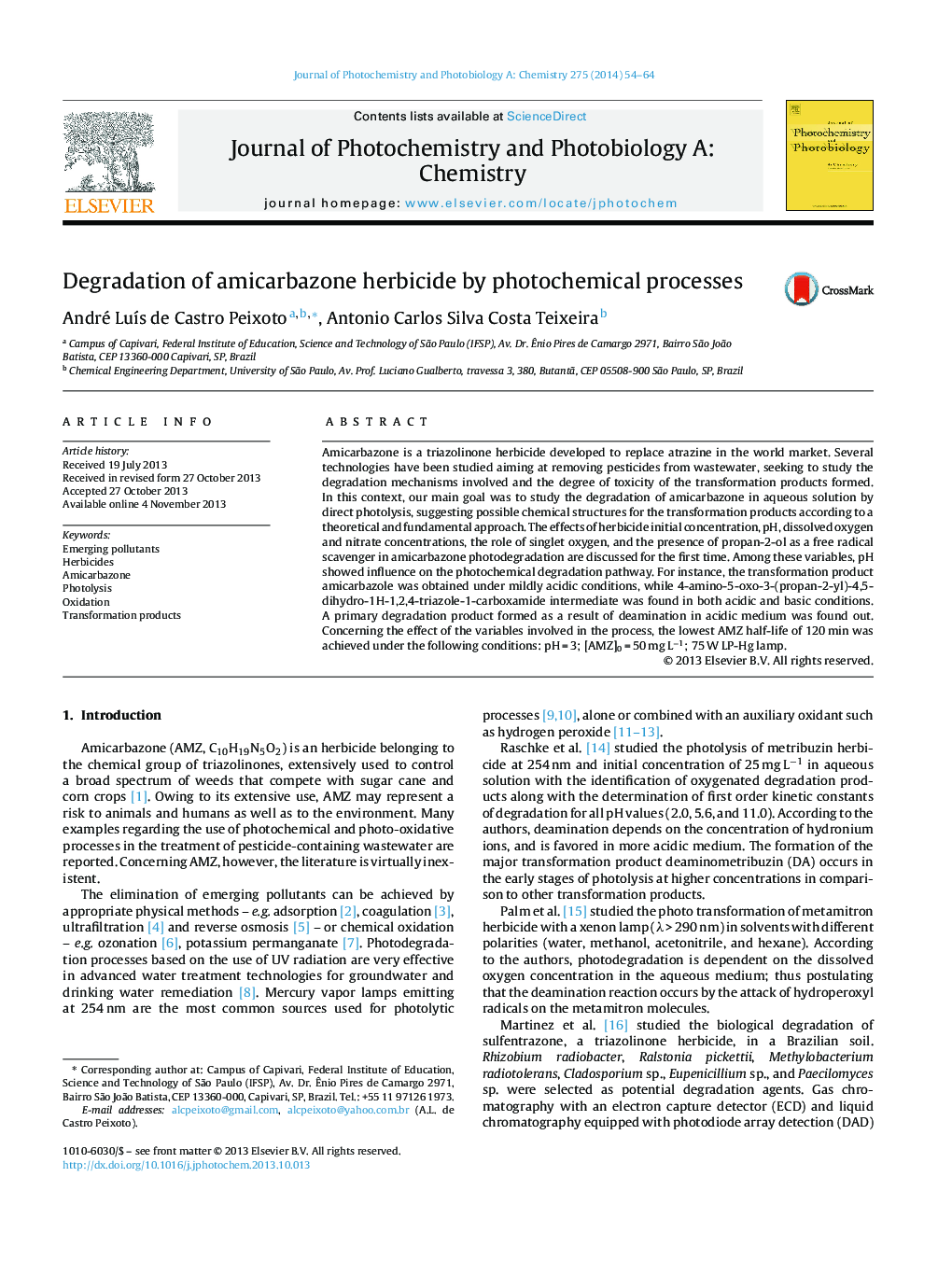| Article ID | Journal | Published Year | Pages | File Type |
|---|---|---|---|---|
| 26312 | Journal of Photochemistry and Photobiology A: Chemistry | 2014 | 11 Pages |
•Photodegradation of amicarbazone herbicide using ultraviolet radiation.•Proposal of transformation products by tandem mass spectrometry (hybrid IT-TOF analyzer).•Transformation products generated from AMZ photolysis are described for the first time.•In situ generation of oxidative species (e.g. singlet oxygen and hydroxyl radicals) in the photo process of amicarbazone degradation.•Lower AMZ half-life of 120 min was achieved under the following conditions: pH = 3; [AMZ]0 = 50 mg L−1; 75 W LP-Hg lamp.
Amicarbazone is a triazolinone herbicide developed to replace atrazine in the world market. Several technologies have been studied aiming at removing pesticides from wastewater, seeking to study the degradation mechanisms involved and the degree of toxicity of the transformation products formed. In this context, our main goal was to study the degradation of amicarbazone in aqueous solution by direct photolysis, suggesting possible chemical structures for the transformation products according to a theoretical and fundamental approach. The effects of herbicide initial concentration, pH, dissolved oxygen and nitrate concentrations, the role of singlet oxygen, and the presence of propan-2-ol as a free radical scavenger in amicarbazone photodegradation are discussed for the first time. Among these variables, pH showed influence on the photochemical degradation pathway. For instance, the transformation product amicarbazole was obtained under mildly acidic conditions, while 4-amino-5-oxo-3-(propan-2-yl)-4,5-dihydro-1H-1,2,4-triazole-1-carboxamide intermediate was found in both acidic and basic conditions. A primary degradation product formed as a result of deamination in acidic medium was found out. Concerning the effect of the variables involved in the process, the lowest AMZ half-life of 120 min was achieved under the following conditions: pH = 3; [AMZ]0 = 50 mg L−1; 75 W LP-Hg lamp.
Graphical abstractFigure optionsDownload full-size imageDownload as PowerPoint slide
